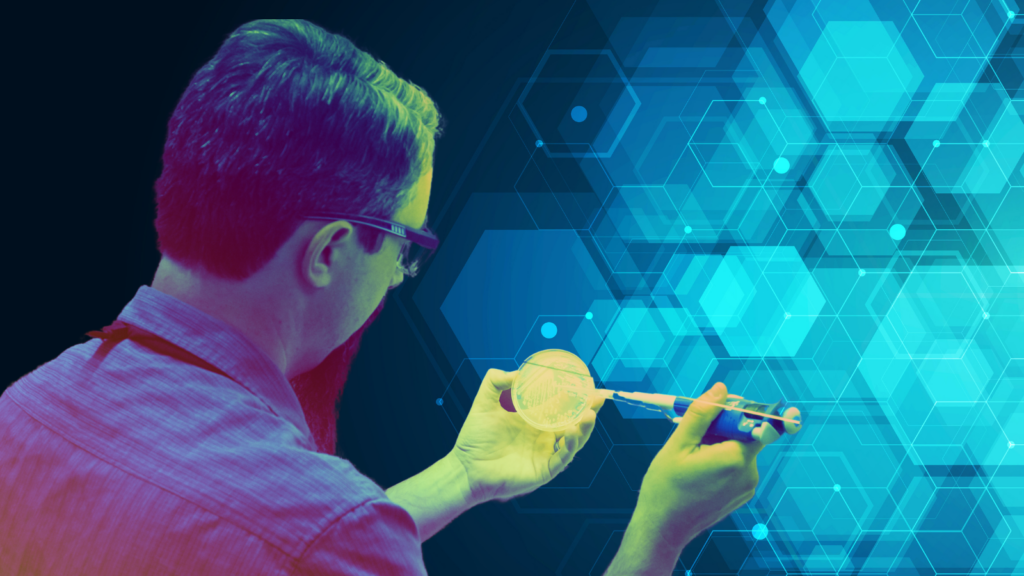
Researchers at the Agile BioFoundry (ABF) and Kiverdi have developed a set of genetic tools to improve the genetic engineering efficiency of the chemoautotrophic bacterium Cupriavidus necator, advancing it as a microbial host that can directly convert carbon dioxide into valuable products.
Using the newly developed genetic toolbox, the researchers engineered C. necator to produce dodecanol, a type of fatty alcohol.
C. necator has been seen as a promising microbial host for biomanufacturing a variety of products, due to its ability to use carbon dioxide as a feedstock.
“This organism can take up carbon dioxide directly and synthesize products,” said Kiverdi’s Dan Robertson. “This organism lets you work with a process that doesn’t use any agricultural land, doesn’t use a lot of water, and has a carbon footprint that is likely 70-80% lower than other processes.”
However, there are few genetic tools available for engineering C. necator, slowing down efforts to turn it into a powerful bioproduction host.
Biotechnology company Kiverdi set out to collaborate with the ABF to develop a set of next-generation genetic tools that would allow them to rapidly engineer C. necator for bioproduction, as part of the company’s efforts to make a variety of molecules from carbon dioxide.
One of the biggest challenges involved in engineering C. necator is overcoming its low transformation efficiency — the organism’s ability to take in and incorporate foreign DNA. Leveraging the ABF’s expertise in microbial genetic system development, the teams developed an engineered strain of C. necator and an updated protocol that improved transformation efficiency over 100-fold.
“The ability to efficiently get DNA into an organism is critical to enabling rapid engineering of microorganisms like C. necator,” said Adam Guss, ABF co-lead for the project. “The tools that we have developed will greatly accelerate Kiverdi’s efforts to produce dodecanol and other products.”
ABF also developed a CRISPR/Cas9-based editing protocol for use in C. necator.
“We were able to test some base tools for both CRISPR editing and CRISPR interference for future optimization to expand genome engineering tools in C. necator,” said ABF project co-lead Carrie Eckert.
The CRISPR tools will simplify the process of introducing DNA into the organism.
“These will be excellent tools for genetic engineering in non-model organisms like C. necator,” Robertson said.
Additionally, the teams developed a broad library of synthetic ribosome binding site (RBS) expression control elements that can help optimize the metabolic pathways in C. necator.
To demonstrate the effectiveness of this set of genetic tools, Kiverdi then used C. necator to produce dodecanol from hydrogen and carbon dioxide. Producing dodecanol from carbon dioxide presents an alternative process for manufacturing chemicals and materials. Kiverdi will be assessing the commercial potential of this platform.
Robertson said collaborating with ABF provided Kiverdi with the tools needed to make engineering C. necator as simple as engineering E. coli. The company also licensed Oak Ridge National Laboratory’s SAGE tool — which provides an easy and efficient way to perform genome engineering — for use in C. necator.
“ABF working with C. necator is accelerating the ability of companies like ours to work with organisms like these,” Robertson said.
The outcomes of this collaboration will benefit Kiverdi’s work engineering organisms to turn carbon dioxide into industrial chemicals and materials, Robertson said.
“This has been an excellent opportunity for a company like Kiverdi, where we don’t have the resources to develop tools like these,” Robertson said. “Having the ABF with all of its capabilities is really a godsend. This experience has been critical for the growth and development of our tools.”
The ABF is supported by the U.S. Department of Energy’s Bioenergy Technologies Office (BETO).
ABF Capabilities used in this collaboration: